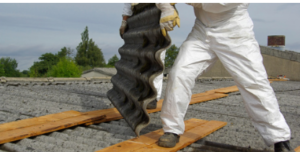In the picturesque city of Adelaide, nestled among its charming streets and historic buildings, lies a silent threat that can pose serious risks to health and property – asbestos. Asbestos, once hailed for its fire-resistant properties, is now recognised as a hazardous material linked to severe health conditions like lung cancer and mesothelioma. For more information about the microscopic asbestos inspection, click here.
 Given its prevalent use in construction before its ban in the late 20th century, the need for asbestos inspection in Adelaide has become paramount. This article delves into the great significance of asbestos inspection, its process, and the steps to safeguard both health and property.
Given its prevalent use in construction before its ban in the late 20th century, the need for asbestos inspection in Adelaide has become paramount. This article delves into the great significance of asbestos inspection, its process, and the steps to safeguard both health and property.
Understanding Asbestos Inspection:
Asbestos inspection is a systematic process aimed at identifying the presence of asbestos-containing materials (ACMs) within residential, commercial, or industrial properties. In Adelaide, where older buildings are abundant, the risk of asbestos exposure is particularly high. Hence, undergoing regular asbestos inspections is crucial for mitigating health risks and ensuring compliance with safety regulations.
Importance of Asbestos Inspection:
- Health Protection: The foremost reason for asbestos inspection is to safeguard human health. Inhalation of asbestos fibres can significantly lead to serious respiratory ailments, including asbestosis and lung cancer. By identifying and managing ACMs through inspection, individuals can reduce the risk of exposure and associated health complications.
- Legal Compliance: Asbestos inspection in Adelaide is not just a matter of health but also a legal requirement. Property owners in Adelaide are obligated to ensure their premises are free from asbestos hazards, as per the regulations outlined by SafeWork SA. Failure to successfully comply with these regulations can result in hefty fines and legal consequences.
- Property Preservation: Beyond health and legal concerns, asbestos inspection also plays a vital role in preserving property value. Identifying and addressing asbestos issues promptly can prevent further deterioration of buildings and structures, thus maintaining their structural integrity and value. For more information about the microscopic asbestos inspection, click here.
The Asbestos Inspection Process:
The asbestos inspection process typically involves several key steps:
- Initial Assessment: A certified asbestos inspector conducts a visual inspection of the property to identify potential ACMs correctly. This assessment includes examining building materials such as insulation, roofing, flooring, and piping.
- Sample Collection: If suspected ACMs are found during the initial assessment, samples are collected for laboratory analysis. These samples are carefully extracted following safety protocols to avoid fibre release into the air.
- Laboratory Analysis: The collected samples are immediately sent to accredited laboratories for analysis. Through microscopic examination, experts determine the presence and concentration of asbestos fibres in the samples.
Safeguarding Health and Property:
In Adelaide, where the legacy of asbestos use looms large, proactive measures are essential to safeguard both health and property. Here are some steps individuals can take:
- Regular Inspections: Schedule periodic asbestos inspections, especially for older properties or those undergoing renovation or demolition.
- Awareness and Education: Stay informed about the dangers of asbestos exposure and the great importance of proper inspection and management practices.
- Engage Certified Professionals: When seeking asbestos inspection services, ensure you hire accredited and experienced professionals who adhere to safety standards and regulations.
- Prompt Action: If asbestos is detected, take swift action to address the issue according to the recommendations provided in the inspection report.
- Long-term Monitoring: Establish a plan for ongoing monitoring and management of asbestos-containing materials to prevent future risks. For more information about the microscopic asbestos inspection, click here.
Conclusion:
Asbestos inspection is not merely a precautionary measure but a proactive step towards protecting lives and properties in Adelaide. By prioritising regular inspections, adhering to safety regulations, and taking prompt action when needed, individuals can mitigate the risks associated with asbestos exposure and significantly contribute to a safer and healthier environment for all. Remember, when it comes to asbestos, vigilance and compliance are key to ensuring peace of mind and well-being.